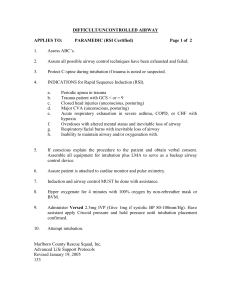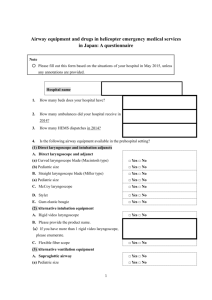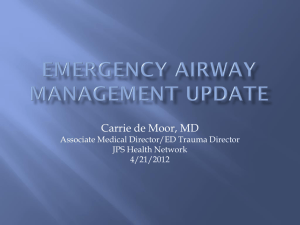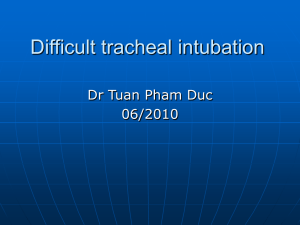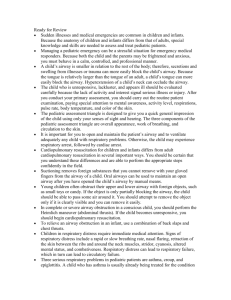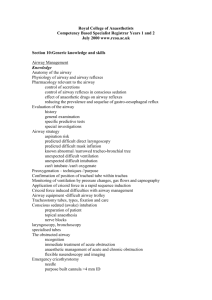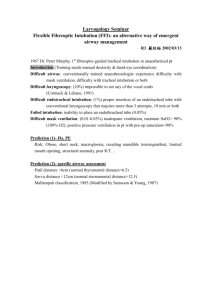Assessment and management of pediatric airway
advertisement
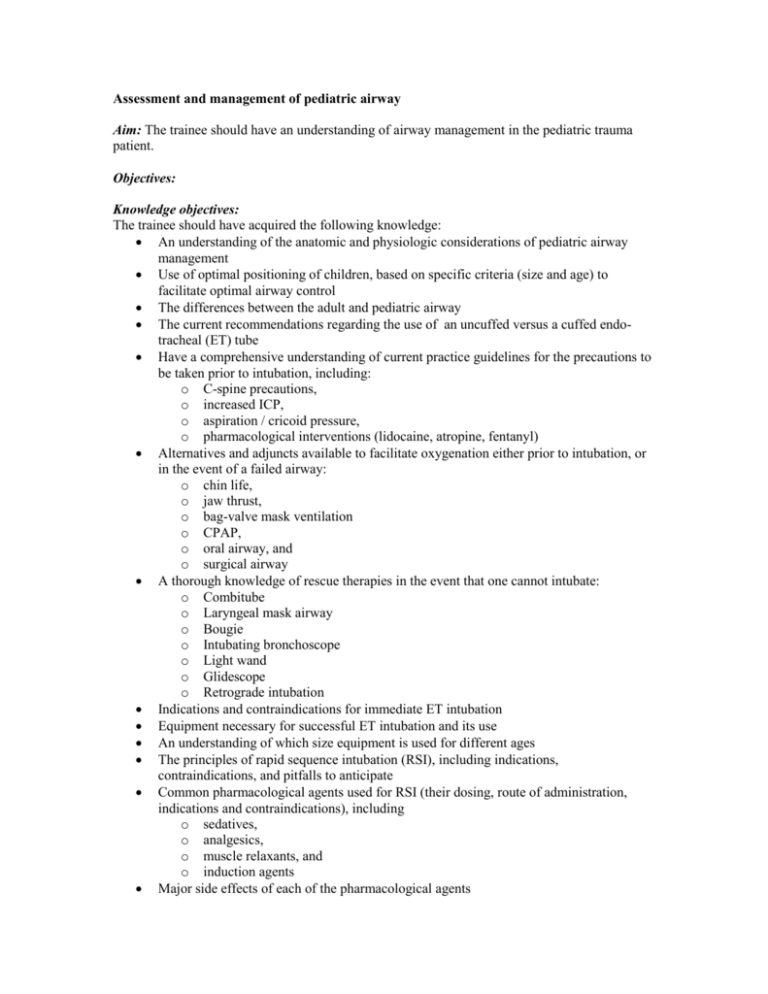
Assessment and management of pediatric airway Aim: The trainee should have an understanding of airway management in the pediatric trauma patient. Objectives: Knowledge objectives: The trainee should have acquired the following knowledge: An understanding of the anatomic and physiologic considerations of pediatric airway management Use of optimal positioning of children, based on specific criteria (size and age) to facilitate optimal airway control The differences between the adult and pediatric airway The current recommendations regarding the use of an uncuffed versus a cuffed endotracheal (ET) tube Have a comprehensive understanding of current practice guidelines for the precautions to be taken prior to intubation, including: o C-spine precautions, o increased ICP, o aspiration / cricoid pressure, o pharmacological interventions (lidocaine, atropine, fentanyl) Alternatives and adjuncts available to facilitate oxygenation either prior to intubation, or in the event of a failed airway: o chin life, o jaw thrust, o bag-valve mask ventilation o CPAP, o oral airway, and o surgical airway A thorough knowledge of rescue therapies in the event that one cannot intubate: o Combitube o Laryngeal mask airway o Bougie o Intubating bronchoscope o Light wand o Glidescope o Retrograde intubation Indications and contraindications for immediate ET intubation Equipment necessary for successful ET intubation and its use An understanding of which size equipment is used for different ages The principles of rapid sequence intubation (RSI), including indications, contraindications, and pitfalls to anticipate Common pharmacological agents used for RSI (their dosing, route of administration, indications and contraindications), including o sedatives, o analgesics, o muscle relaxants, and o induction agents Major side effects of each of the pharmacological agents Have a thorough understanding of difficult airway algorithms such as that of the American Society of Anesthesiology Knowledge of post-intubation care to include basic ventilatory settings and how to tape the ETT Indications for awake intubation Understand, anticipate, and manage post-intubation airway complications Specific issues related to surgical airway on children (surgical cricothyroidotomy not recommended for < 12 years) Skills objectives: The trainee should have an understanding of the following skill set: Non-invasive techniques for opening the airway, specifically chin-lift and jaw thrust techniques Appropriate sizing of pediatric equipment based on age and weight Demonstrate the use of necessary equipment required for intubation Techniques for bag-valve mask ventilation Technique for intubation Understand and anticipate patients with a potentially difficult airway and the need for airway expertise and management Technique for needle cricothyroidotomy Ability to identify proper placement of endotracheal tube



